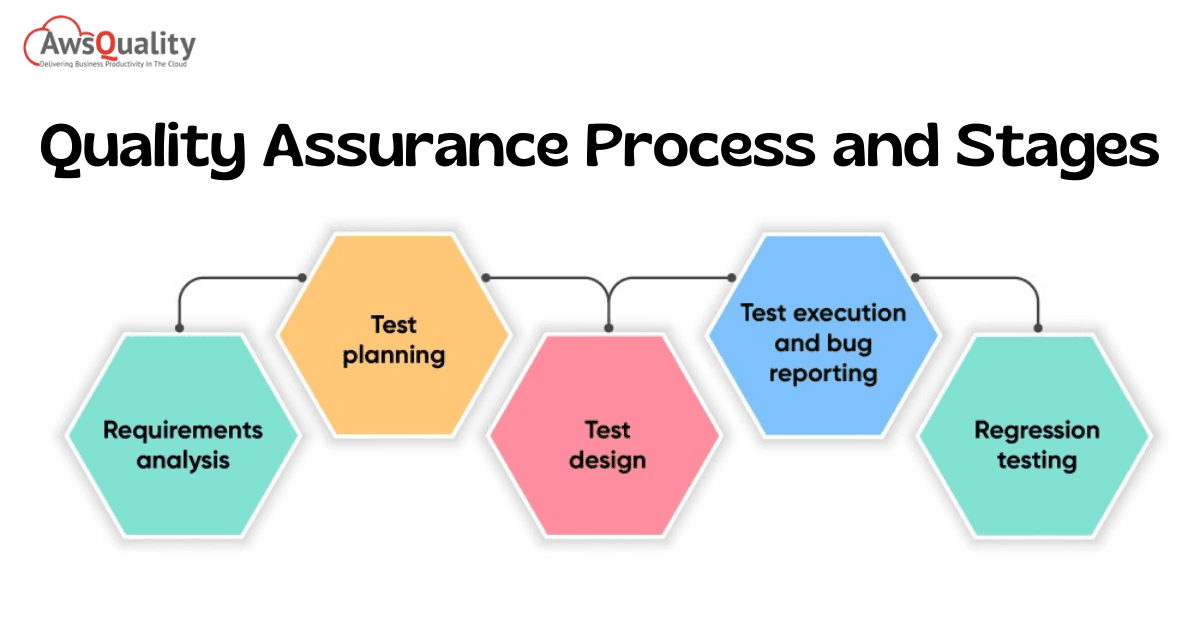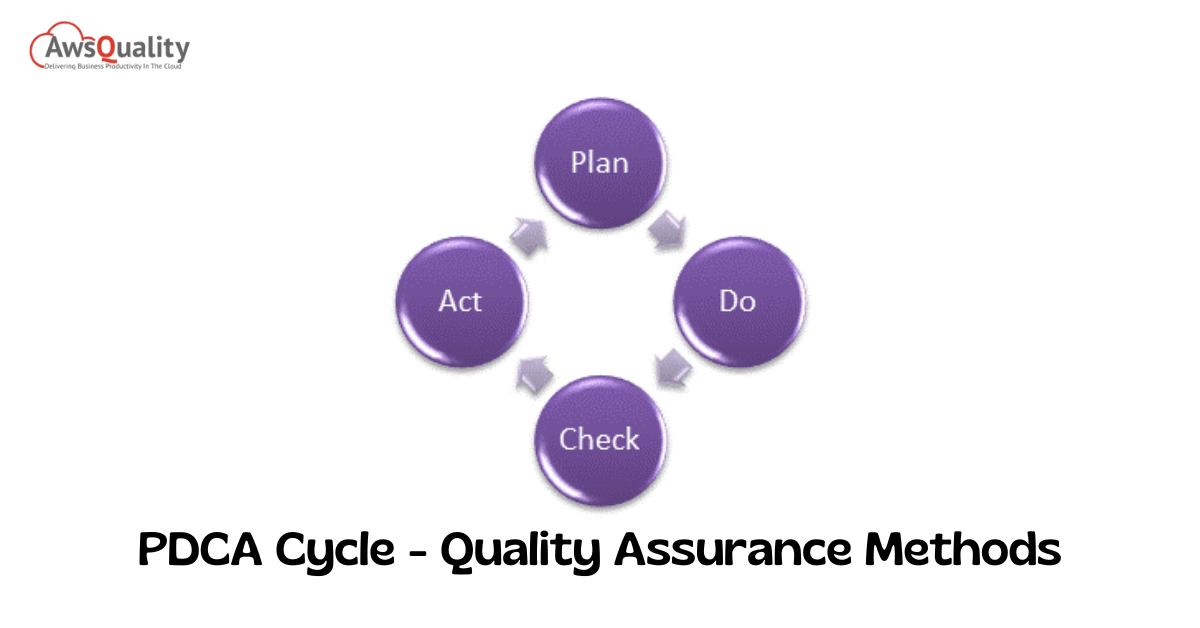
QA process is a set of actions carried out during the testing process to guarantee that software quality objectives are satisfied. Both verification and validation are part of the QA process.
The PDCA cycle is a well-defined cycle used in quality assurance methods. The phases of this cycle are:
• Plan
• Do
• Check
• Act
• Plan – Plan and establish the process-related objectives and determine the processes required to deliver a high-Quality end product.
• Do – Development and testing processes and “do” changes in the processes.
• Check – Check whether it meets the predetermined objectives.
• Act – A quality control tester should put into practice the essential steps to bring about process changes.
STAGES OF QA PROCESS
STAGE 1 – Requirement Analysis: –
Requirement Analysis is the first step of the QA process. In this phase quality assurance team understands the requirements, like what is to be tested. Analyze and research the needs throughout this STLC phase. The scope of the testing is determined in this phase.
Activities in Requirement Phase
• Identify types of tests to be performed.
• Gather details about testing priorities and focus.
• Prepare Requirement Traceability Matrix (RTM).
• Identify test environment details where testing is supposed to be carried out.
STAGE 2- Test Planning:-
A Senior QA manager establishes the test plan strategy, as well as the project’s effort and cost estimates, during the Test Planning phase.
Test Planning Activities
• Preparation of test plan/strategy document for various types of testing
• Test tool selection
• Test effort estimation
• Resource planning and determining roles and responsibilities.
• Training requirement
STAGE 3- Test Case Development and Environment Setup:-
The test case development phase starts once the test planning phase is completed. In this stage, the testing team records the specific test cases. This stage involves writing down specific test cases by the testing team. Additionally, the testing team prepares the necessary test data. The quality assurance team reviews the test cases when they are prepared.
Test Case Development Activities
• Create test cases, and automation scripts (if applicable)
• Review and baseline test cases and scripts
• Create test data (If Test Environment is available)
The software and hardware settings under which a work product is evaluated are determined by Test Environment Setup. It is a vital element of the testing process and can be completed concurrently with the Test Case Development Phase.
Test Environment Setup Activities
• Understand the required architecture and environment setup and prepare hardware and software requirement list for the Test Environment.
• Setup test Environment and test data
• Perform a smoke test on the build. QA engineers run a quick check to make sure the software or a module works as intended. When passed, further investigation begins.
STAGE 4 -Test Execution and Bug Reporting Phase:-
The testers carry out the test execution phase, during which the software build is tested using established test plans and test cases. The procedure entails running test scripts, maintaining test scripts, and reporting bugs.
Test Execution Activities
• Execute tests as per plan
• Document test results and log defects for failed cases
• Map defects to test cases in RTM
• Retest the defect fixes
• Track the defects in closure
It involves different types of testing like Unit testing, Integration testing, Performance testing, Security testing, Cross browser testing/ Cross-platform testing, etc.
Unit testing – isolates a part of code and ensures that it is correct. A singular function, method, procedure, module, or object might be considered a unit.
Integration testing– Verify the work of that different component as a single system.
Performance testing
Load testing- Check system behavior for normal peak load
Stress testing- Identify the critical load at which the system fails.
Security testing– Ensuring the solution has a sufficient level of protection.
Cross-browser/cross-platform testing- verifies that a program runs without a hitch on various browsers (such as Chrome, Mozilla, and Safari) (Android, iOS, Windows Phone).
STAGE 5- Retesting and Regression Testing:-
Retesting is carried out to confirm that the test cases that failed in the final execution pass after the defects are fixed. Only unsuccessful test cases undergo retesting. Retesting makes sure that the original fault has been corrected.
Regression testing involves retesting already executed test cases after defects are resolved to ensure no new bugs are introduced into the system and that existing functionality works as expected.
STAGE 6- Test Cycle Closure
The Test Cycle Closure phase covers the completion of test execution, which includes activities such as test completion reporting, the collection of test completion matrices, and the collection of test results. Testing team members meet, discuss and analyze strategies that have to be implemented in the future, taking lessons from the current test cycle. The goal is to get process bottlenecks out of the way for upcoming test cycles.
Test Cycle Closure Activities
• Evaluate cycle completion criteria based on Time, Test coverage, Cost, Software, Critical Business Objectives, Quality
• Prepare test metrics based on the above parameters.
• Document the learning out of the project
• Prepare Test closure report.
• Qualitative and quantitative reporting of the quality of the work product to the customer.
• Test result in analysis to find out the defect distribution by type and severity.






